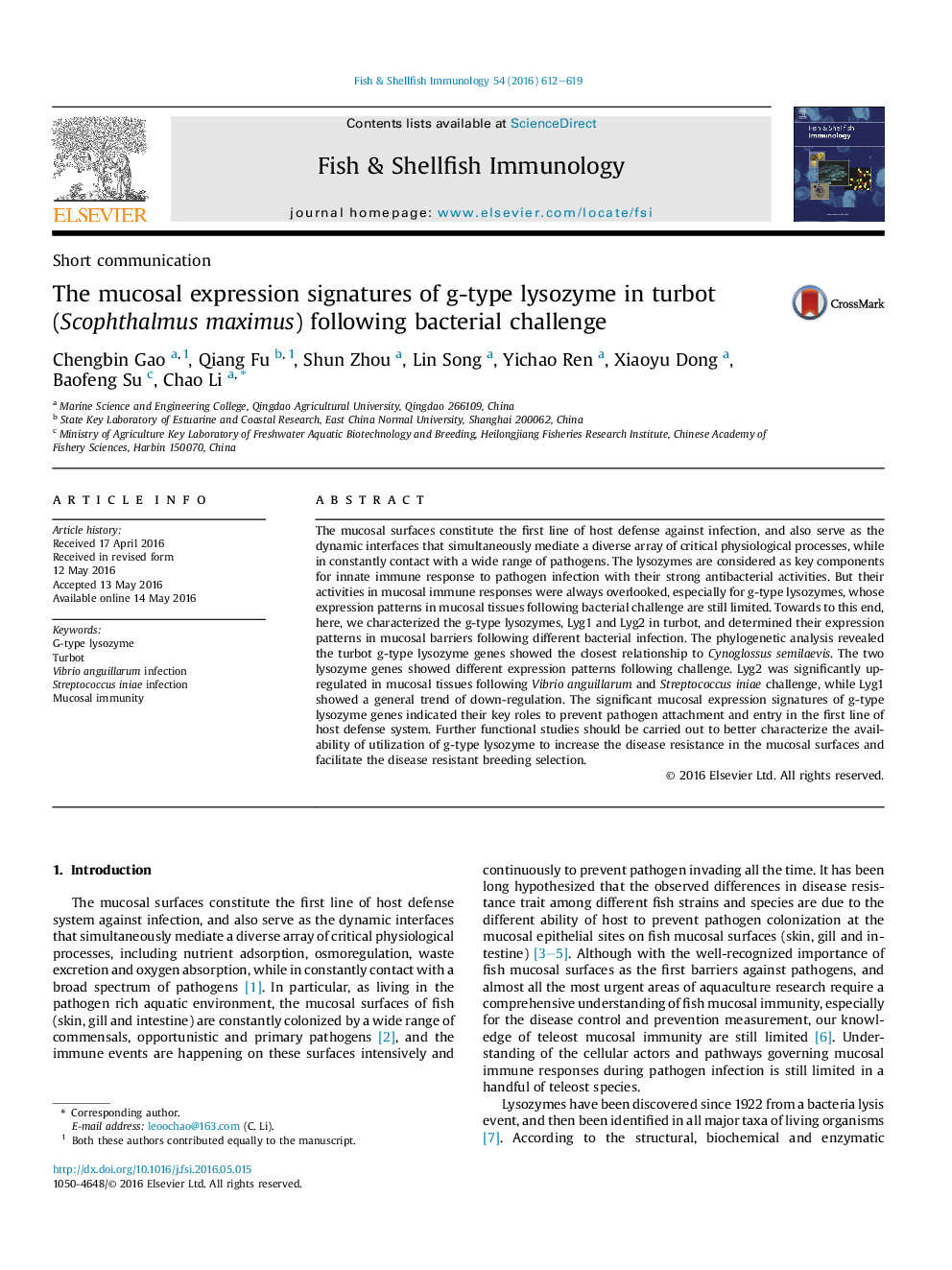| Article ID | Journal | Published Year | Pages | File Type |
|---|---|---|---|---|
| 2430668 | Fish & Shellfish Immunology | 2016 | 8 Pages |
•Two G-type lysozyme were identified in turbot.•G-type lysozyme were ubiquitously expressed in turbot tissues.•G-type lysozyme genes were significantly induced after bacterial challenge.
The mucosal surfaces constitute the first line of host defense against infection, and also serve as the dynamic interfaces that simultaneously mediate a diverse array of critical physiological processes, while in constantly contact with a wide range of pathogens. The lysozymes are considered as key components for innate immune response to pathogen infection with their strong antibacterial activities. But their activities in mucosal immune responses were always overlooked, especially for g-type lysozymes, whose expression patterns in mucosal tissues following bacterial challenge are still limited. Towards to this end, here, we characterized the g-type lysozymes, Lyg1 and Lyg2 in turbot, and determined their expression patterns in mucosal barriers following different bacterial infection. The phylogenetic analysis revealed the turbot g-type lysozyme genes showed the closest relationship to Cynoglossus semilaevis. The two lysozyme genes showed different expression patterns following challenge. Lyg2 was significantly up-regulated in mucosal tissues following Vibrio anguillarum and Streptococcus iniae challenge, while Lyg1 showed a general trend of down-regulation. The significant mucosal expression signatures of g-type lysozyme genes indicated their key roles to prevent pathogen attachment and entry in the first line of host defense system. Further functional studies should be carried out to better characterize the availability of utilization of g-type lysozyme to increase the disease resistance in the mucosal surfaces and facilitate the disease resistant breeding selection.
